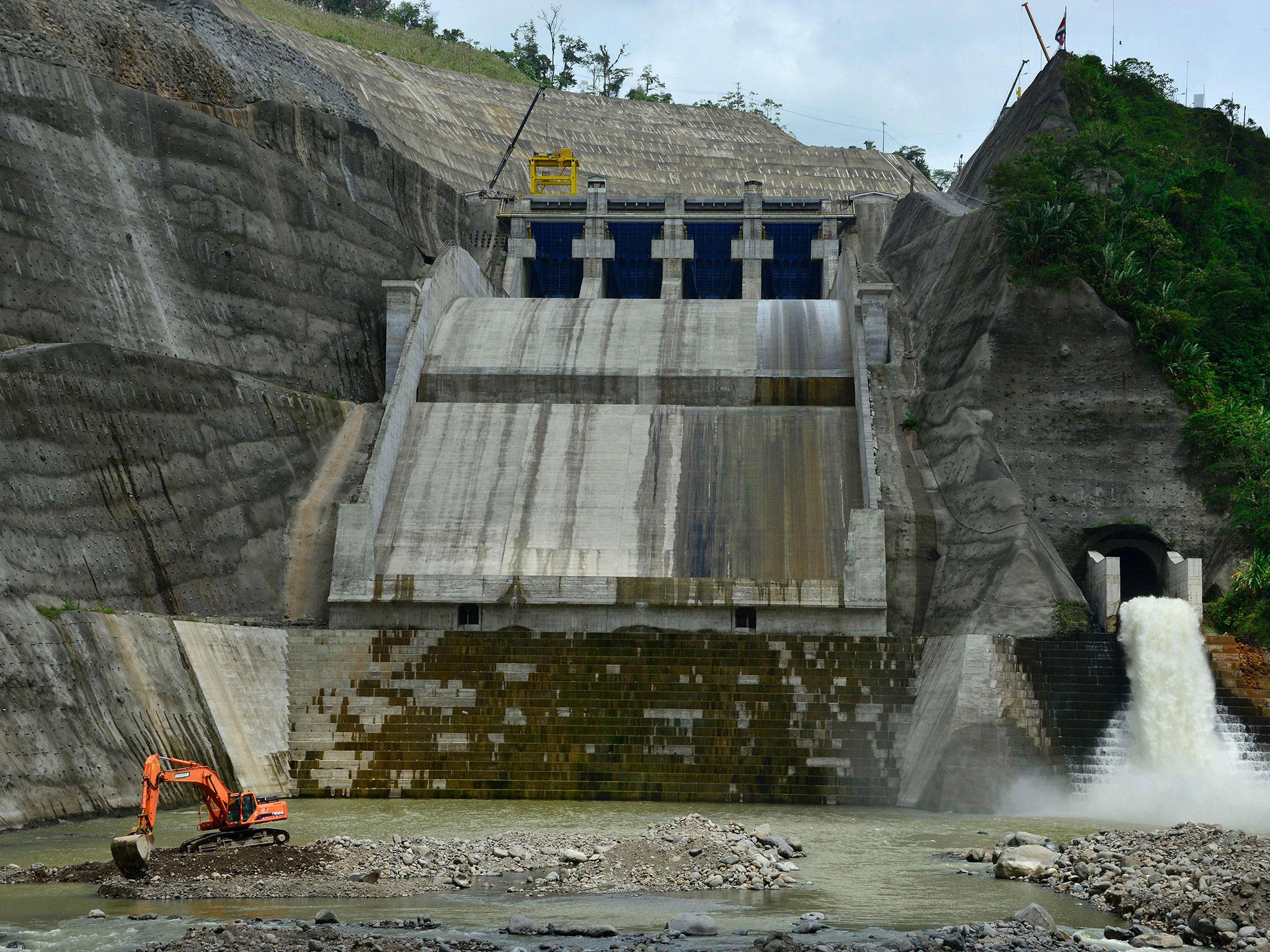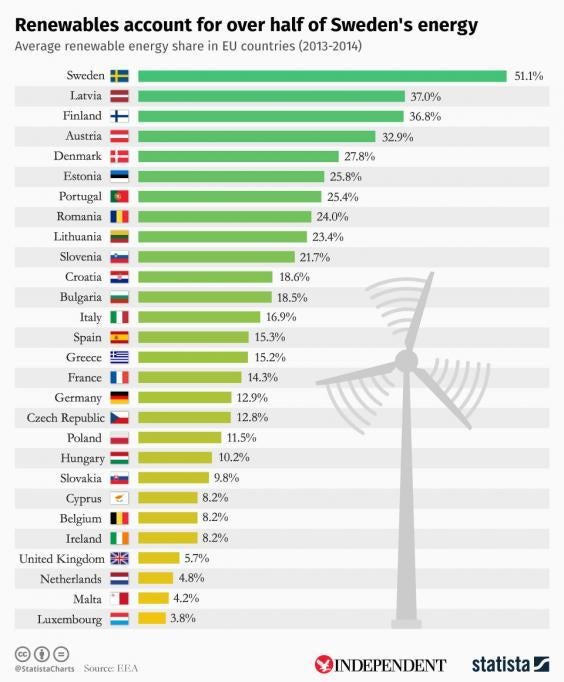Costa Rica's electricity was produced almost entirely from renewable sources in 2016
Around 15 per cent of US electricity supply was renewable

Your support helps us to tell the story
From reproductive rights to climate change to Big Tech, The Independent is on the ground when the story is developing. Whether it's investigating the financials of Elon Musk's pro-Trump PAC or producing our latest documentary, 'The A Word', which shines a light on the American women fighting for reproductive rights, we know how important it is to parse out the facts from the messaging.
At such a critical moment in US history, we need reporters on the ground. Your donation allows us to keep sending journalists to speak to both sides of the story.
The Independent is trusted by Americans across the entire political spectrum. And unlike many other quality news outlets, we choose not to lock Americans out of our reporting and analysis with paywalls. We believe quality journalism should be available to everyone, paid for by those who can afford it.
Your support makes all the difference.Almost all Costa Rica's electricity was produced by renewable energy in 2016, continuing its reputation as a “verdant gem” among a pile of “black coal rocks”.
The Costa Rican Electricity Institute (ICE) said that around 98.1 per cent of the country’s electricity came from green sources.
These included large hydropower facilities, fed by a myriad of rivers and heavy seasonal rains, geothermal plants, wind turbines, solar panels and biomass plants.

The country used carbon-free electricity for more than 250 days last year with a continuous 110-day stretch from 17 June until 6 October.
A brief blip after that, when fossil fuel plants were switched on, was followed by another clean stint until at least 13 December, according to an ICE spokesman quoted by Mashable.
Science and environment journalist Maria Gallucci described the tropical country as "a verdant gem amid a pile of black coal rocks".
Costa Rica used 98.9 per cent renewable energy in 2015.

In comparison, less than 15 per cent of the US electricity supply for January to October 2016 was renewable, according to the US Energy Information Administration.
Coal and natural gas together made up nearly two-thirds of the US electricity generation over that period and nuclear power provided the remaining 19 per cent.
ICE president Carlos Manuel Obregón said he expected renewable power generation to stay “stable” in Costa Rica in 2017.
The country, which hosts more than five per cent of the world’s species biodiversity despite a landmass that covers 0.03 per cent of the planet, has recently set up four new wind farms.
Costa Rican clean development adviser Dr Monica Araya has said the extent of Costa Rica's renewable electricity generation is a “fantastic achievement".
But she added: “It hides a paradox, which is that nearly 70 per cent of all our [Costa Rica's] energy consumption is oil.”
The 98.1 per cent figure only refers to electricity usage, not gas used for heating or fuel used in vehicles, for example.
Join our commenting forum
Join thought-provoking conversations, follow other Independent readers and see their replies
0Comments